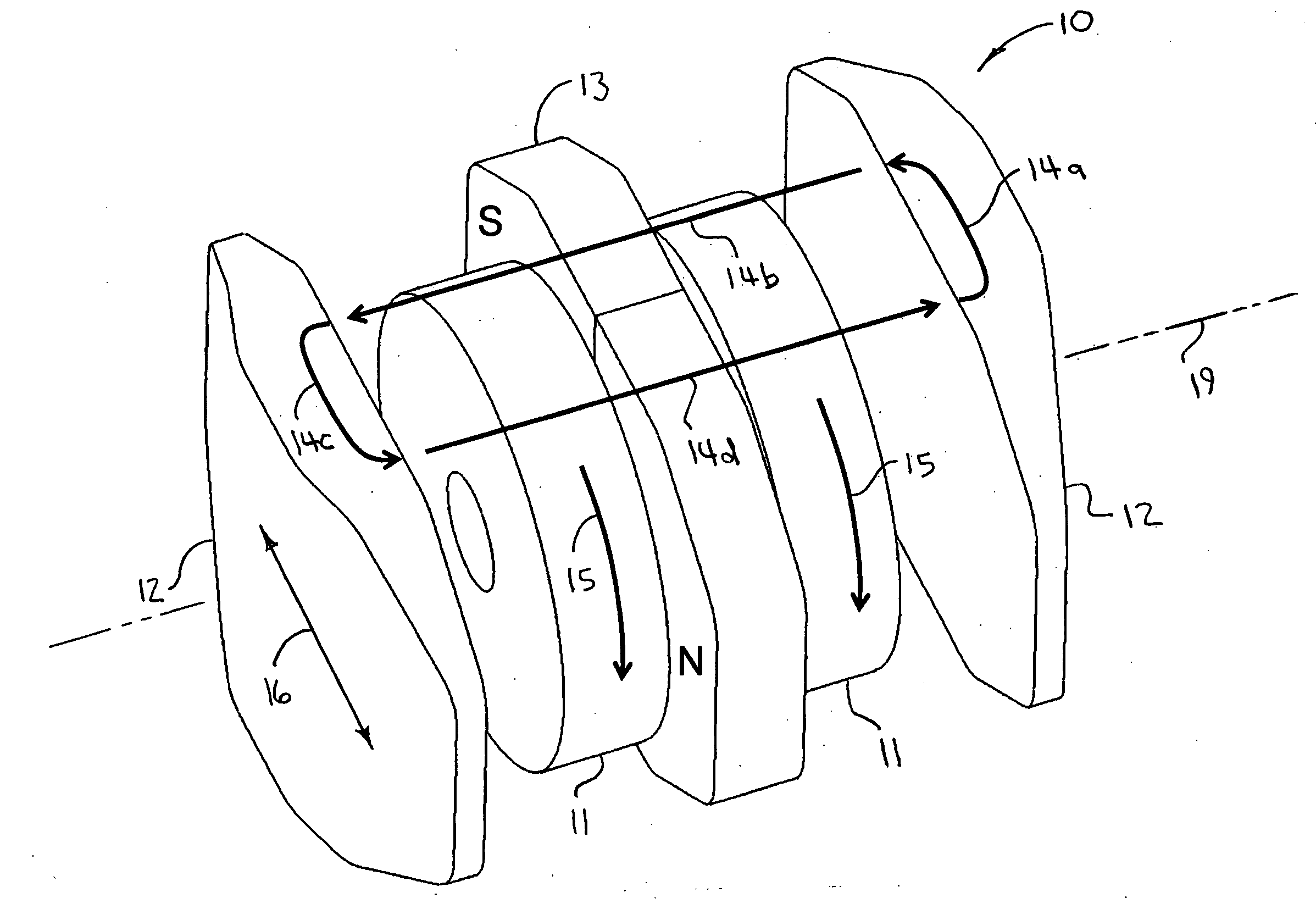Lorentz actuator for miniature camera
a miniature camera and actuator technology, applied in the field of electric motors, can solve problems such as misalignment of optical elements, and achieve the effect of reducing undesirable non-linear (rotational) movemen
- Summary
- Abstract
- Description
- Claims
- Application Information
AI Technical Summary
Benefits of technology
Problems solved by technology
Method used
Image
Examples
Embodiment Construction
[0031] A method and system for moving miniature components, such as the optical components of a camera for a cellular telephone, uses the Lorentz force to effect such movement. As those skilled in the art will appreciate, the Lorentz force is a magnetic force that is perpendicular to both the local magnetic field and the direction of motion of a charged particle (an electron). The magnitude of this force is given by the formula:
F=I×B Leff [0032] where: [0033] F is the force, [0034] I is current, [0035] B is the magnetic field strength, and [0036] Leff is the effective length of the conductor that carries the current I within the magnetic field B.
[0037] Referring now to FIG. 1, an exemplary embodiment of the present invention is shown. A Lorentz actuator 10 can be defined by a plurality of coils 11 and at least one magnet 13. Optionally, a plurality of flux guides 12 can be included. Two coils 11 can disposed intermediate two outboard flux guides 12. A single magnet 13 can be dispo...
PUM
 Login to View More
Login to View More Abstract
Description
Claims
Application Information
 Login to View More
Login to View More - R&D
- Intellectual Property
- Life Sciences
- Materials
- Tech Scout
- Unparalleled Data Quality
- Higher Quality Content
- 60% Fewer Hallucinations
Browse by: Latest US Patents, China's latest patents, Technical Efficacy Thesaurus, Application Domain, Technology Topic, Popular Technical Reports.
© 2025 PatSnap. All rights reserved.Legal|Privacy policy|Modern Slavery Act Transparency Statement|Sitemap|About US| Contact US: help@patsnap.com



